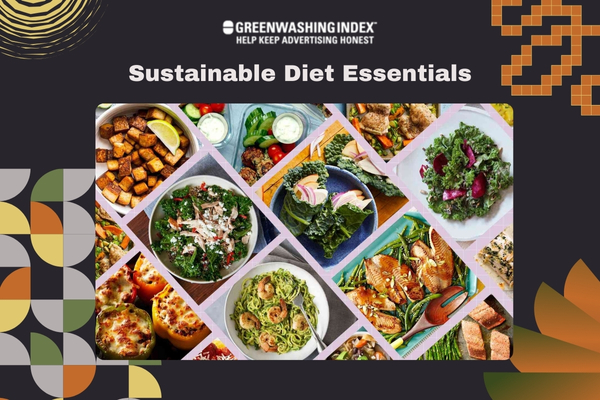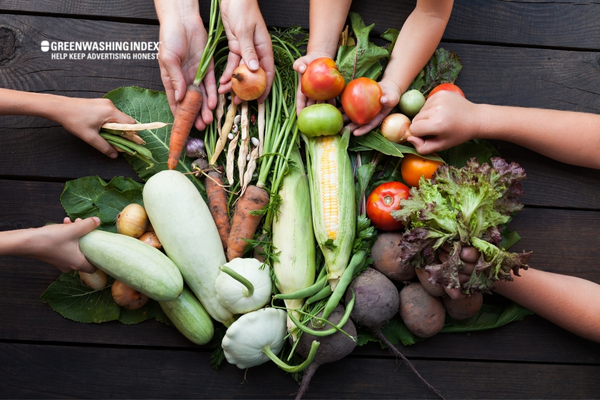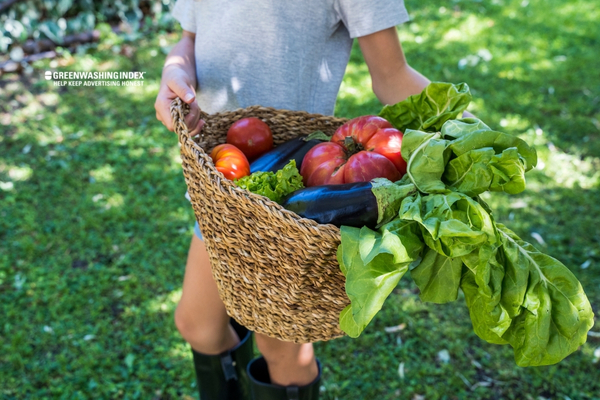

When we talk about a healthy lifestyle, the term “sustainable diet” often comes into play. But what does it truly involve? Away from the technical jargon and complex definitions, I’m diving deep to explore how everyday food choices can impact not just our health but also the world around us.
A sustainable diet isn’t just another fad; it’s a movement toward responsible eating and eco-friendly nutrition that’s picking up steam. Let’s crack the code together.
So, you’re curious about everything a sustainable diet entails? In its simplest form, a sustainable diet focuses on choosing foods that are good for our bodies and kind to our planet. This means prioritizing green food choices in your meals that nourish you without harming the environment.
It looks beyond just calories and nutrients to consider where your food comes from, how it’s produced, and what happens after you’re done eating.
A sustainable diet is a way of eating that looks out for both our health and the planet. It’s all about picking foods that nourish our bodies without harming Earth. With a sustainable diet, we think about where our food comes from, how it grows, and what kind of mark it leaves on nature.

When I create my plate with sustainable foods, I make sure it ticks two major boxes: good for me and good for the environment. Here’s how you can do it too:
These actions nourish not just us but support a healthy world as well.
Sustainable eating stands on three big ideas:
By keeping these three pillars strong in my eating habits – thinking about money fairness between buyers/sellers, honoring all cultures’ eats around me, and aiming for everyone to have access – I am supporting an even bigger picture: a world where we all enjoy delicious meals without hurting tomorrow’s chances for young ones coming up after us.
Remembering these easy principles every day helps guide my choices towards more responsible eating patterns benefiting both health and the environment now – while looking out long-term too.
Also Read: New Nordic Diet Guide: Embracing Health and Sustainability
When I think about my journey toward a sustainable diet, I remember it’s as much about being kind to the planet as it is about taking care of myself. It’s not just a passing trend; it’s a commitment to living better. I want to guide you through how I crafted my own sustainable diet plan, step by step.

Making changes in the way I eat didn’t happen overnight. At first, the idea of overhauling my entire diet was daunting. But I started simple and built up from there. Here are some straightforward steps:
I found out pretty quickly that sticking a bunch of different foods onto your plate is not just great for health but also helps our Earth thrive:
Changing towards more green stuff – plants – in your meals isn’t just trendy; it truly helps lighten our footprint on this planet:
Everything we do takes resources like water or energy; choosing what we eat carefully means we can help conserve them:
Crafting a sustainable diet starts with small steps: knowing where your food comes from, eating diverse foods, especially plants reducing meat consumption cutting back on waste planning ahead Including variety ensures personal health matches ecological balance.
Plants significantly lower our environmental footprint while conserving resources like water deeply affects sustainability, If each part seems overwhelming focusing one at a time makes transforming eating habits into eco-friendly nutrition surprisingly manageable.
Remember responsible eating isn’t only greener options—it’s a mindset embracing deeper respect for finite resources. OURS Planet provides us with every day.
Also Read: Bamboo Fabric: Sustainable Fashion’s Savior or Slip-up?
When I think about how my food choices impact the world, a sustainable diet is always at the forefront of my mind. Eco-friendly nutrition isn’t just a buzzword; it’s a pathway to protecting our planet. So let’s dive into where you can shop for sustainable food and what labels to look for.

Finding sustainable food options means knowing where to look. Here’s a simple guide:
Understanding what the labels mean is crucial when choosing environmentally friendly products:
Understanding, all these symbols might seem overwhelming at first but worry not! You’ll become familiar with them as you continue making conscious shopping decisions in your journey toward responsible eating—and alongside many others who choose this path each day toward bettering our beloved planet through the foods we eat!
Also Read: Sustainable Halloween: Throw a Fun Costume Swap Bash!
When we think about what’s on our plates, it’s not just about the taste. It’s about where it comes from and what that means for our earth. A sustainable diet has a lot to do with choosing food that doesn’t harm our planet so much. That’s why I want to talk specifics—let’s dive deep into eating stuff grown close to home.

When we talk about a sustainable diet, we’re looking at how our food choices can help the planet. One big piece of this puzzle is eating locally grown foods.
Local foods are more than just a trendy idea; they leave a smaller carbon footprint. Why is that? Well, imagine a tomato that’s grown far away from where you live. That single tomato has to travel on trucks or even planes to get to your local grocery store. This travel burns fuel and sends gases up into the air, which isn’t great for our sky and air.
But when you pick up a tomato that’s grown close by, it doesn’t have to go on such a long journey. It might come straight from the farmer to your table, which means less fuel burned and cleaner air for all of us.
Let me break down why eating locally sourced food matters so much:
Every time I make the choice for sustainable diet practices like responsible eating and eco-friendly nutrition by picking green food choices like these locally sourced treasures at the farmer’s market or my neighborhood store—I’m doing my bit against the environmental impact caused by diets across the globe.
It feels good knowing I’m taking care of my corner of the world while also enjoying some really tasty meals! And when folks ask me why I bother with these food choices—I tell them about all these benefits—benefits not just for me but for our community and our whole planet too!
Also Read: Food Waste Reduction: Simple Tips for Major Impact
When I embark on a journey to improve my eating habits, I often focus on not just what’s good for me but also what’s good for the planet. This is where the concept of a sustainable diet really shines. It’s about making choices that are eco-friendly, kind to our earth, and responsible overall.

One of the most effective ways to follow a sustainable diet is by reducing food waste. And who knew? In doing so, we might even keep our waistlines in check too. Here’s how I manage my food smarter and cut down on waste:
Talking about a sustainable diet often means thinking about the environment and our health at the same time. I like to think of it as being kind to Earth while also taking care of myself. An important part of a sustainable diet is reducing waste – this can help cut down on how much trash ends up in landfills.
Plus, wasting less food also saves money! I’ll share with you ways I make sure leftovers aren’t left behind and how you too can minimize food waste.
Plan Your Meals
Before stepping foot into a grocery store, I take some time to plan out what I’ll eat during the week. This small step makes a big difference:
Store Properly
Storing food correctly keeps it fresh longer, so when it comes to sustainable diet practices:
Also, did you know your freezer is your friend?
Love Your Leftovers
Leftovers are like bonus meals! Here’s how I make sure they get used:
Remembering that every bit of food saved is good for both my wallet and my planet motivates me to follow through on these actions daily as part of my journey towards responsible eating.
By embracing these steps into our lives, we commit not just to an eco-friendly nutrition path but also participate actively in reducing the environmental impact of diets globally. Being mindful of green food choices may seem small but imagine if everyone did this – quite impactful don’t you think?
When I think about making food choices that are good for our planet, picking the right seafood is a big deal. You might wonder what makes some seafood better for the environment than others. Well, it’s all about how fish are caught and whether there are enough of them left in the ocean.
I’ll share with you a few simple tips on how to select seafood that doesn’t harm our oceans:
By sticking to these easy steps when choosing my seafood, I help protect our oceans and make sure there will still be plenty of fish swimming around for future generations to enjoy too! It feels good knowing that every responsible eating choice I make, especially with eco-friendly nutrition in mind like sustainable diet practices – including green food choices – impacts our environment positively!
When I think about what’s on my plate, it’s not just the flavors that matter to me but also where my food comes from. That’s why a sustainable diet is something I take seriously. This kind of diet balances our need for nourishment with care for our planet. It’s about making choices that are good for both us and the environment.
Being mindful about what I eat means looking closely at how it affects other living beings and our environment. Here’s how animal welfare fits into the concept of a sustainable diet:
1. Know Your Food Sources: This means understanding where your food comes from. For example, if I buy eggs or milk, I try to find out how the chickens or cows are treated. Were they given space to move freely? What kind of food were they fed?
2. Choose Products from Humane Farms: I look out for labels that say things like “free-range” or “organic.” These can signal that animals were treated better than on traditional farms where animals might be kept in tight spaces.
3. Eat Less Meat: A big part of eating ethically is minimizing harm to animals by reducing meat consumption. Personally, this doesn’t mean giving up meat entirely—just eating less of it and choosing wisely when I do.
4. Support Animal Welfare Legislation: Voting for laws that protect farm animals helps make sure they’re treated humanely across the industry.
By being conscious of these factors, every bite we take can contribute to a healthier planet and happier farm animals – which is pretty amazing!
In wrapping up, my journey through a sustainable diet has shown me that being kind to the planet starts with what’s on my plate. It’s not just about cutting down meat or choosing organic; it’s truly a holistic approach.
By eating locally, reducing waste, and considering how my food is produced, I play a part in nurturing the environment. Let’s remember, though, that transitioning to eco-friendly nutrition doesn’t happen overnight. It’s okay to take small steps.
